In the colder winter months, the British countryside is magically transformed into a white wonderland of frosty fields, snowy forests and woodlands.
Don't let the darkness of winter put you off from heading outdoors to spot wildlife, as this season brings with it some of nature's greatest wildlife spectacles and many thriving plant species.
Keep and eye and ear out during your next woodland or forest walk with our guide to the best British wildlife to spot in woodlands in the winter months.
Best woodland plants to spot in the winter
All illustrations by Felicity Rose Cole
Traveller’s joy (Clematis vitalba)
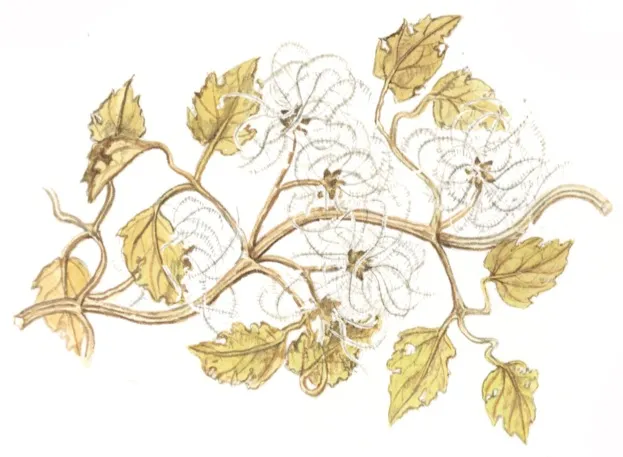
Huge ropes ascend into branches; feathery plumes on seed-heads. Limestone or chalky soils.
Butcher’s broom (Ruscus aculeatus)
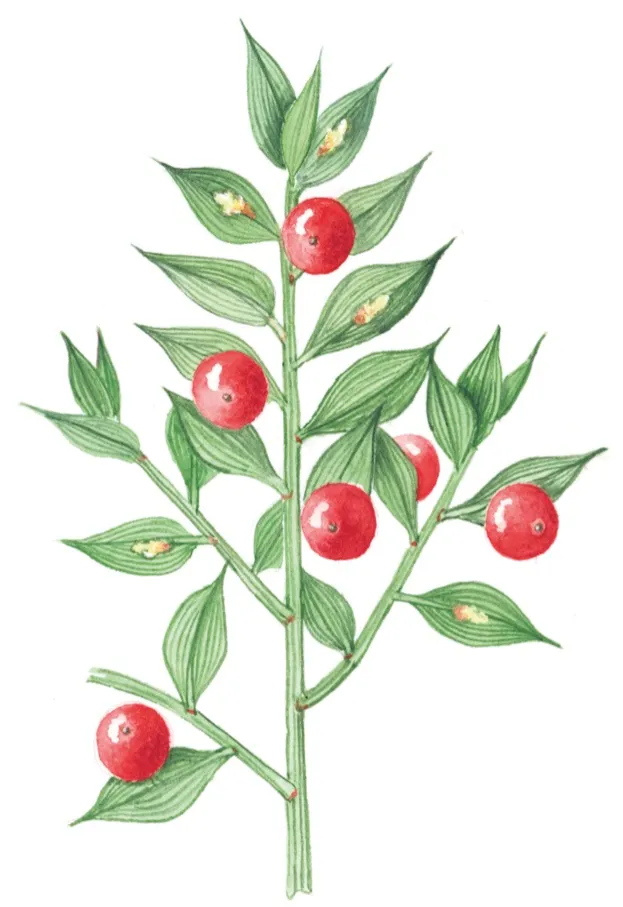
Greenish flowers and red berries; ‘leaves’ are modified stems. Mainly in southern and western woods.
Mistletoe (Viscum album)
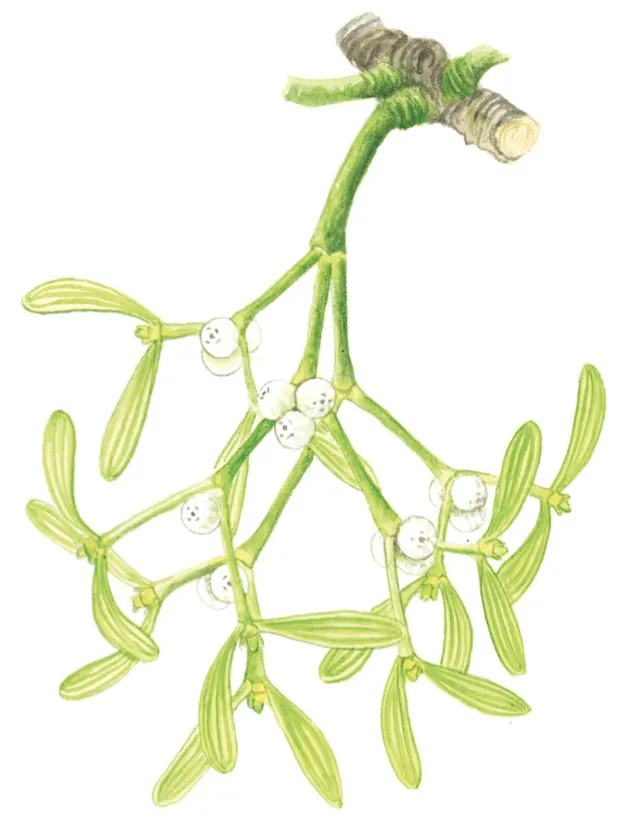
White berries and oval, evergreen leaves. Mainly in south and west, along wood-edges and in orchards.
Common polypody (Polypodium vulgare)
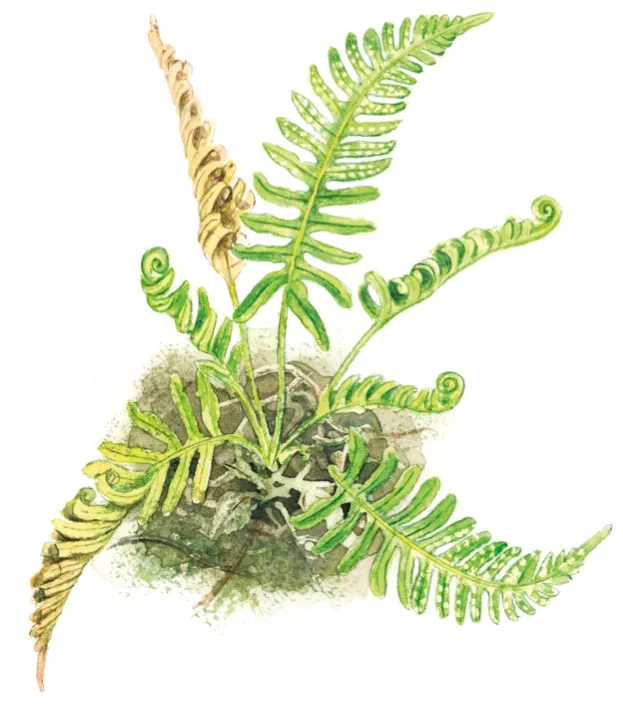
One of three similar species, all with lobed fronds and clusters of orange spores on underside. Widespread.
Hart’s tongue fern (Phyllitis scolopendrium)
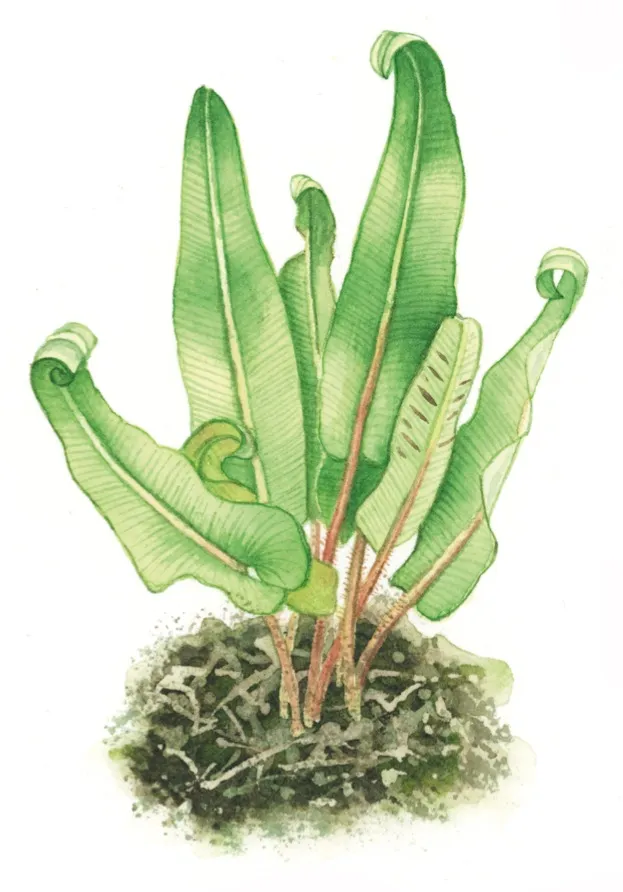
Leathery, strap-like fronds, with parallel rows of spores underneath. Mainly west and north; rarer in east.
Hard fern (Blechnum spicant)
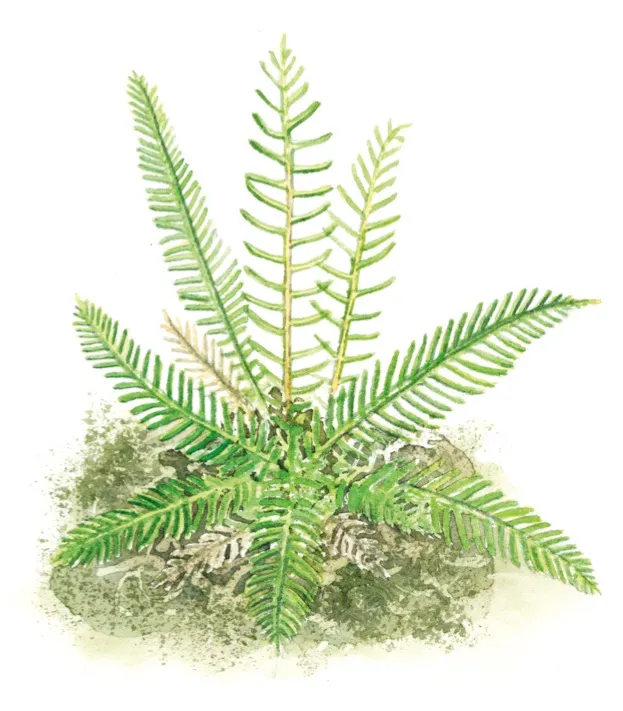
Two frond types: sterile are broad and lobed; spore-bearing are narrow and comb-like. Mainly on acid soils.
Coral spot fungus (Nectria cinnabarina)
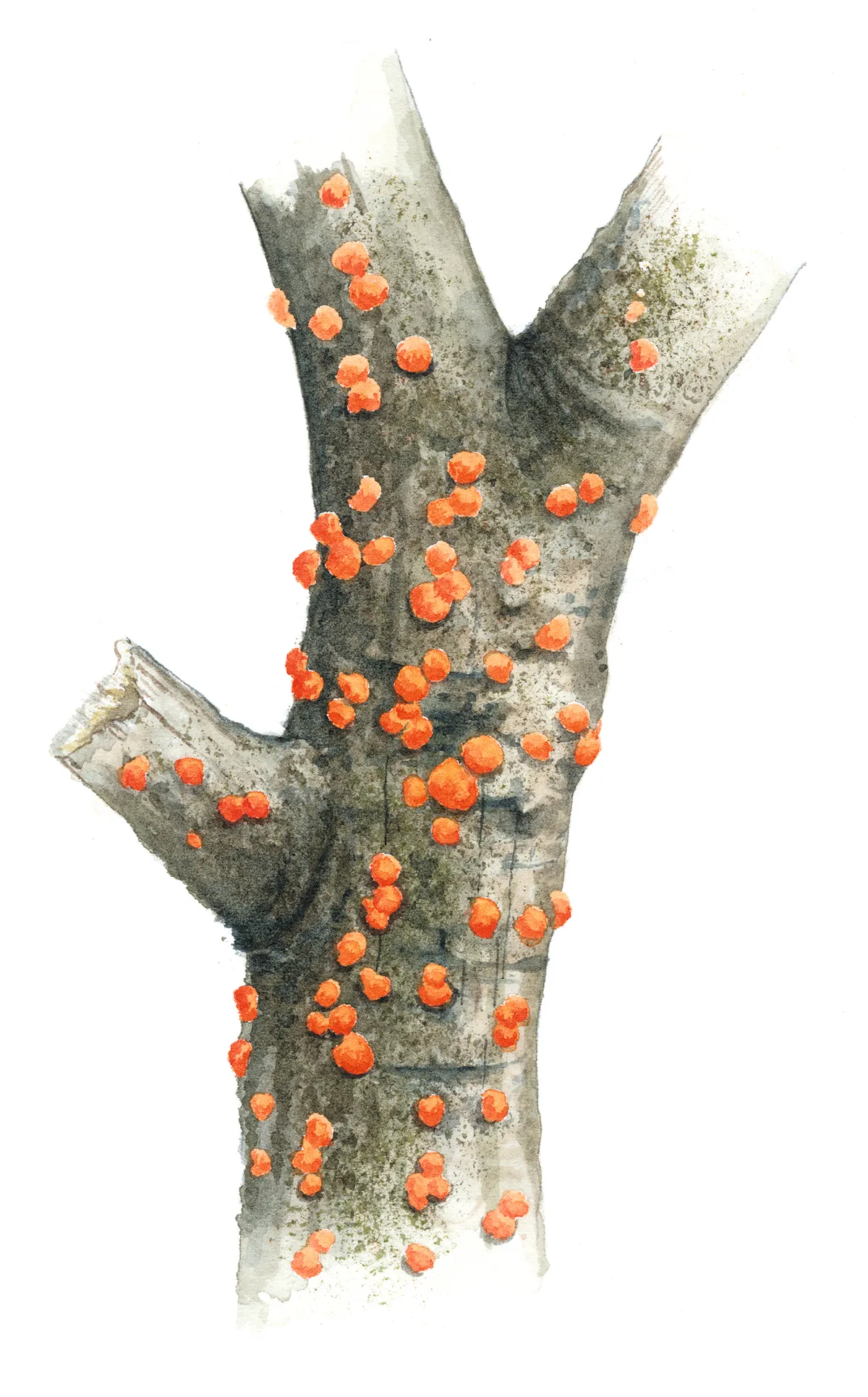
Bright orange or pink polka-dot pustules. Widespread everywhere on smaller branches and twigs.
King Alfred’s cakes (Daldinia concentrica)
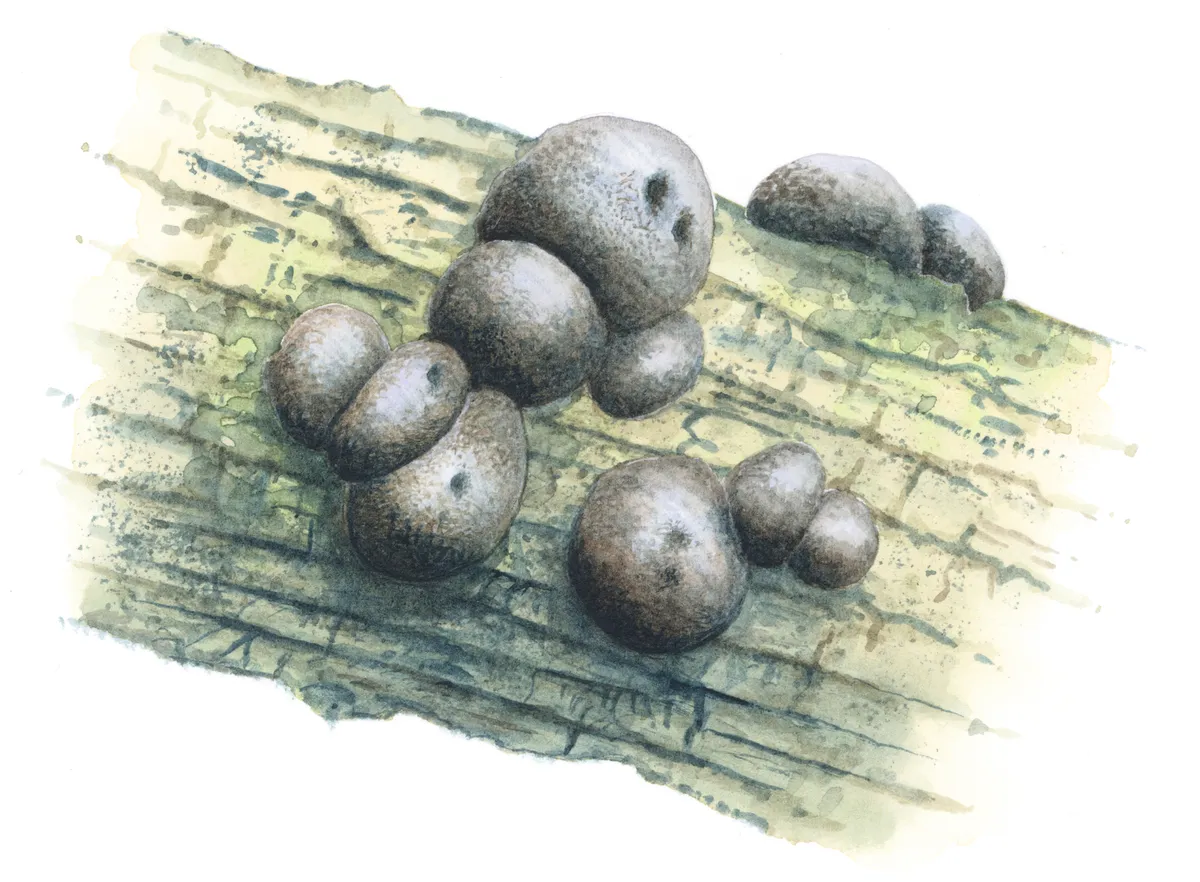
Blackish fruiting bodies; when sliced reveals concentric rings. On tree trunks, especially ash and beech.
Many-zoned polypore (Trametes versicolor)
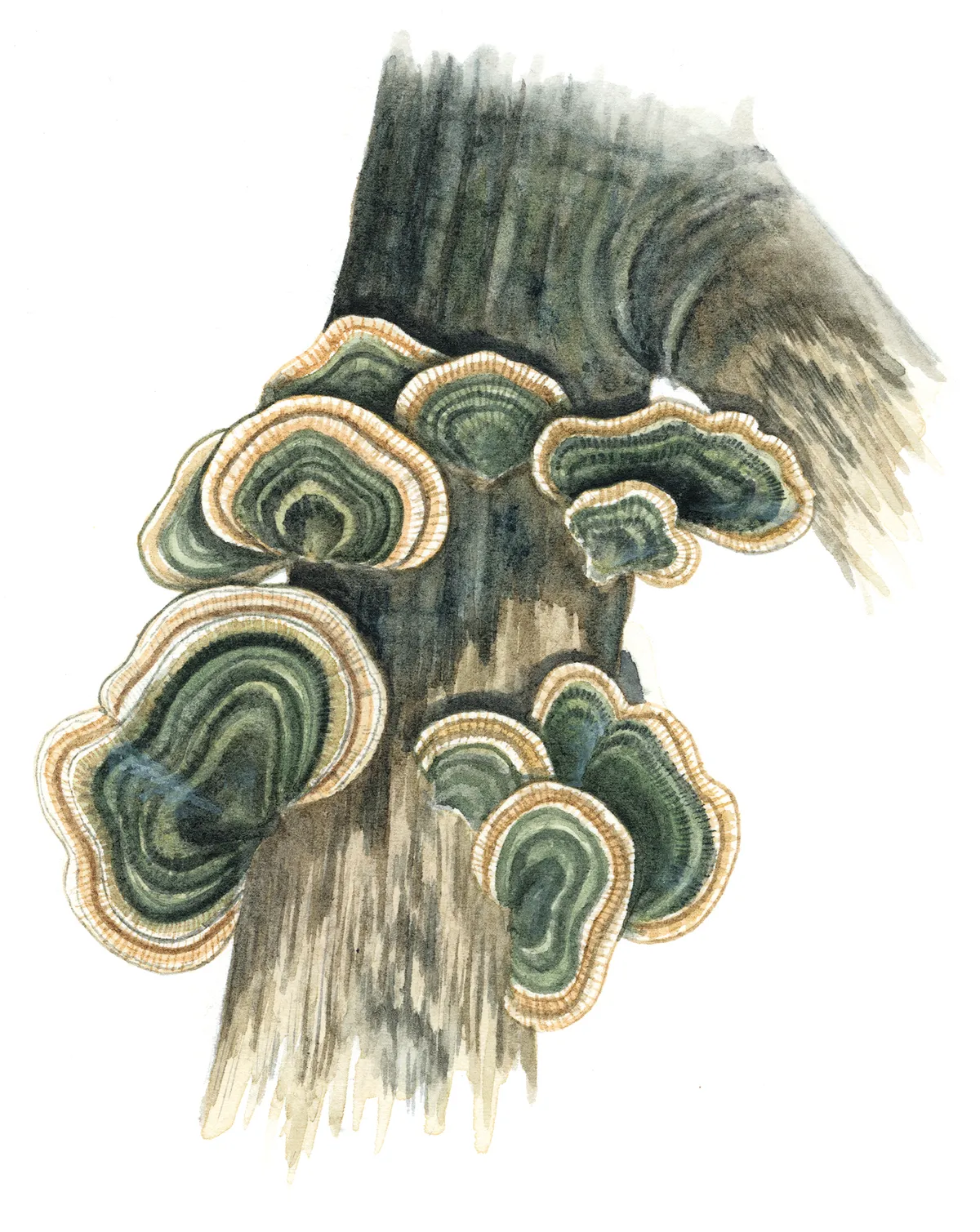
Banded brackets with pale edges; fresh brackets often purplish ‘bloom’. Common on rotting logs.
Large white-moss (Leucobryum glaucum)
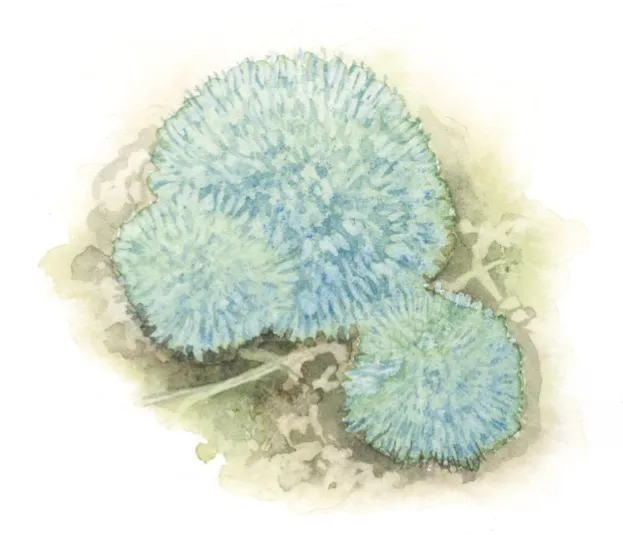
Forms large tufts of whitish-green leaves, paler when dry. Woods with little ground cover, especially beech.
Capillary thread-moss (Bryum capillare)
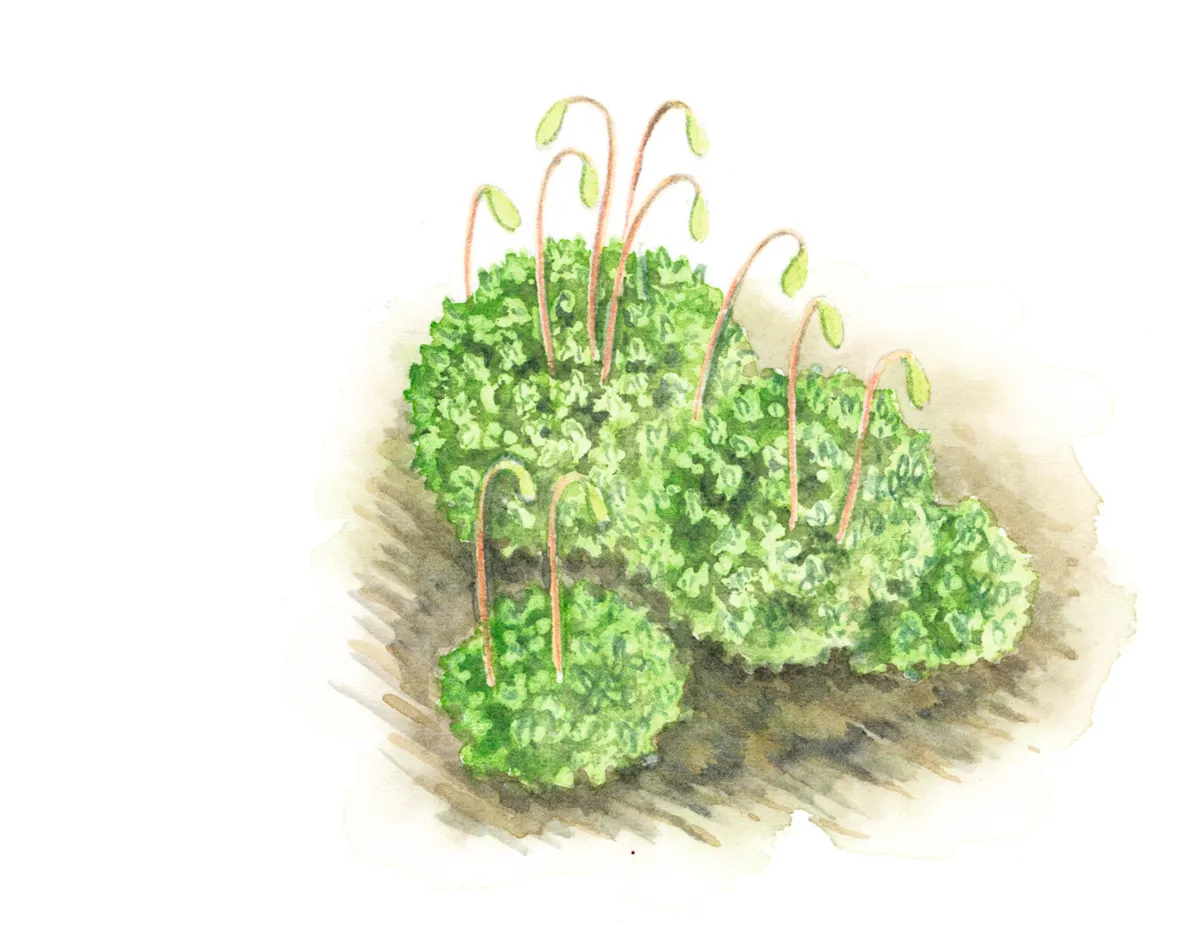
Leaves are oval with hair-like tips; drooping, cylindrical spore capsules. One of our most common mosses.
Rough-stalked feather-moss (Brachythecium rutabulum)
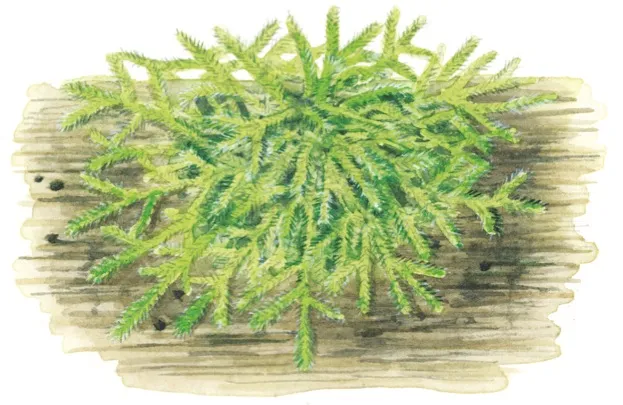
Forms feathery cushions and mats; egg-shaped leaves. Very common.